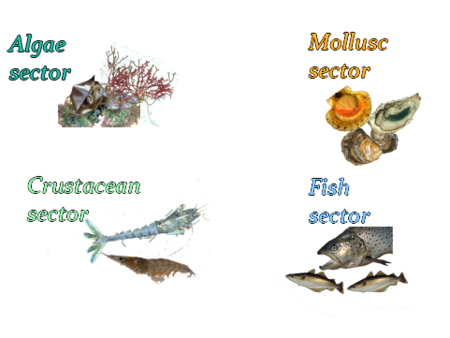Platax
Name : | Orbicular batfish |
|---|---|
Scientific name : | Platax orbicularis, (Forsskal, 1775), family Ephippidae |
Size : | The maximum size of a Platax can reach 50 cm in lenght |
History: from the early days to the present
The Platax is a fish that has only recently been grown in aquaculture. This species is reared in Taiwan and also produced on a small scale in Thailand for the aquarium market. There is hardly any literature on its biology or husbandry.
Today, Platax orbicularis is the priority species for lagoon fish farming development in French Polynesia, with the appearance of a local production industry on the horizon in 2009. This fish species was chosen because of its increasing rareness in Polynesian lagoons and its high economic potential.
Collaboration between Ifremer and the Polynesian fisheries service (Service de la pêche polynésien) was initiated in 2003. In 2007, this work led to the development of methods that can control of part of the biological cycle, meaning that production of the first local aquacultured fish can be envisaged in the near future.
Rearing techniques and production cycle
The Platax is a species where the sexes become differentiated as puberty begins, but where sexual inversions (male then female) are also known.
Natural spawning can be obtained in captivity with wild animals after a few months acclimation. Fish born in captivity reproduce in their second year, once they have reached 1.5 kg in weight. Under natural Polynesian temperature and photoperiod conditions, females spawn throughout the year. In successive spawnings they produce an average of 50 000 eggs per kg body weight. Annual productivity in a pond of acclimatised genitors is 2 million eggs per kg of females.
The eggs are about 1.3 mm in diameter and hatch to produce larvae 3.7 mm long after 24 hours of incubation.
Two to three days after hatching the larvae are fed on live prey, first Brachionus plicatilis for 10 days and then salina (nauplii and pregrown one-day-olds). Around 18 days, the metamorphosed individuals of 1.5 cm and 120 mg are gradually weaned onto micro-particles (dry food).
The fish then spend their growing phase in floating cages. The length of this phase is around 12 months, by which time they reach a weight of about 900 g.
Platax marketability
A commercial study made in Tahiti in 2005 illustrated the popularity of this fish species in Polynesia, notably in Polynesian and Chinese communities (Service de la Pêche - Papeete - Le Maréchal B. and Darrasse S., 2005).
The market is presently estimated at 60 tonnes for a sale price between 1000 and 1500 French Polynesian Francs/kg (8 to 12.5 € per kg).
The evaluation of the potential market and sale price will need to be brought up to date with the significant amount of fish to be added to the market in 2009.
Platax products
Several fresh sale weights can be considered :
- 500 g which corresponds to portion size
- 900 g to 1.5 kg suitable for preparation as fillets (fillet yield over 50 %): a form of preparation that corresponds to the culinary demands of the Polynesian and Chinese communities.
Platax figures
60 | Present estimated tonnage for the Tahitian market |
|---|---|
12 | Number of months needed to rear a fish to 900 g |
2007 | First year when then fish were reared over their entire life cycle in captivity |
2009 | First Tahitian Platax hatchery constructed |
Strengths/Weaknesses
Strengths | Weaknesses |
|---|---|
|
|

